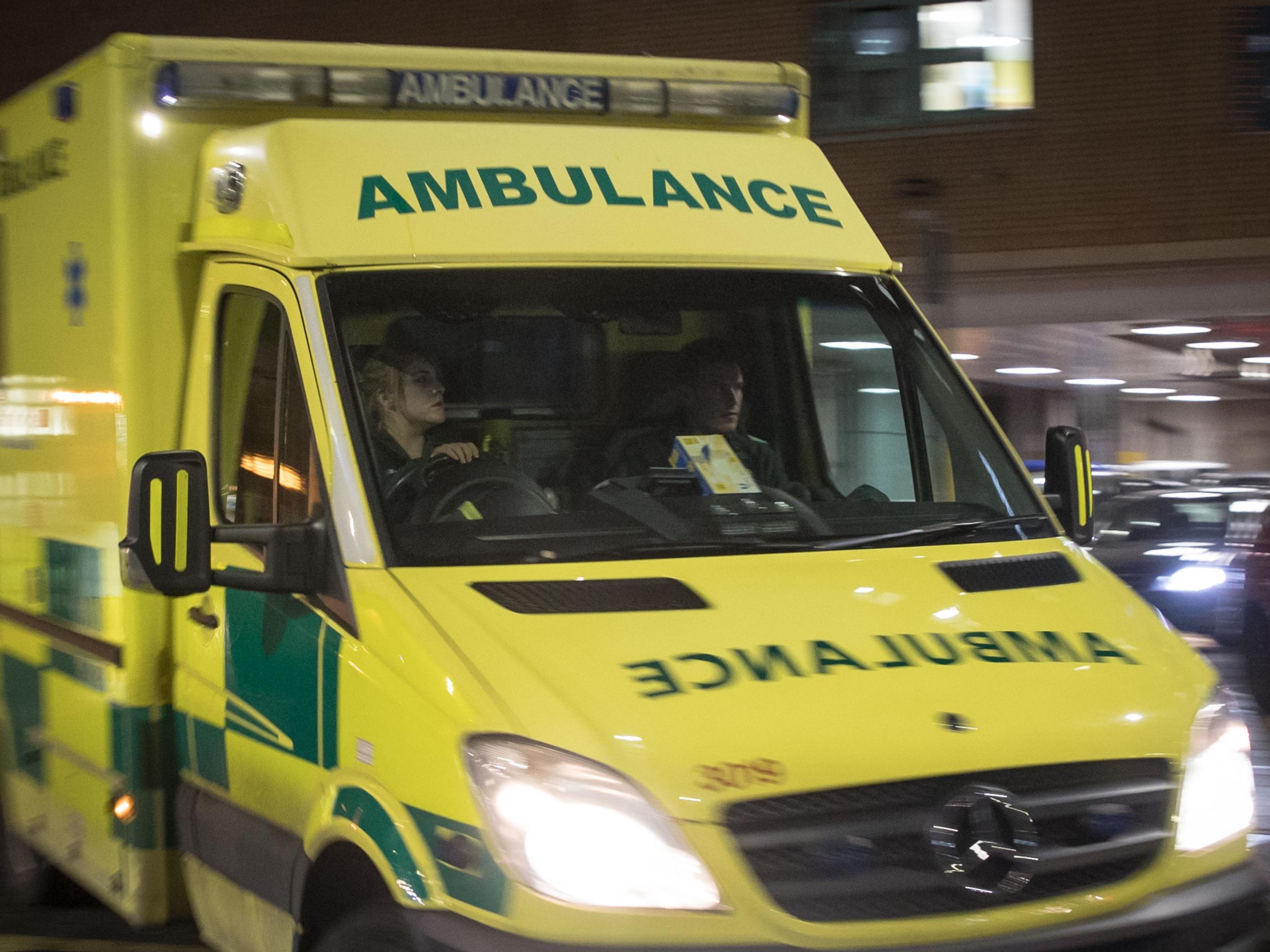Twice as many ambulances turned away from A&E last winter due to bed shortages, figures show
'This is not the quality of care that anybody is comfortable with providing or patients deserve'

Your support helps us to tell the story
From reproductive rights to climate change to Big Tech, The Independent is on the ground when the story is developing. Whether it's investigating the financials of Elon Musk's pro-Trump PAC or producing our latest documentary, 'The A Word', which shines a light on the American women fighting for reproductive rights, we know how important it is to parse out the facts from the messaging.
At such a critical moment in US history, we need reporters on the ground. Your donation allows us to keep sending journalists to speak to both sides of the story.
The Independent is trusted by Americans across the entire political spectrum. And unlike many other quality news outlets, we choose not to lock Americans out of our reporting and analysis with paywalls. We believe quality journalism should be available to everyone, paid for by those who can afford it.
Your support makes all the difference.Almost twice as many ambulances were turned away from hospital A&E departments this winter because no beds were available, new figures have shown.
Between December and February, 478 ambulances had to be diverted to another hospital, compared to an average of 249 times over the same period for the previous three years.
Health campaigners said the figures, published in a Nuffield Trust report, revealed a “systematic denial of safety at an unprecedented scale”.
January was the worst month on record for A&E departments in NHS hospitals, with more patients than ever waiting more than four hours to be seen.
Doctors said overwhelming demand caused by an ageing population and limited resources caused chaotic scenes over the winter.
Severe bed shortages resulted in nurses seeing patients in corridors, and emergency departments closing their doors to seriously ill patients.
The think tank said ambulance crews were being prevented from responding quickly to other urgent calls when they were turned away by A&E departments.
None of the three main ambulance targets for responding to calls have been hit since May 2015.
Of the 233,472 most serious calls, classed as “category A”, received in January this year, at least 95 per cent should have had a response within 19 minutes.
However, the data showed that 29,000 calls did not receive a response within this timeframe. Just 88 per cent of responses met the target.
The Royal College of Nurses said ministers “must understand how critical a category A ambulance response can be – with every extra minute waiting for it to arrive, the chances of surviving a potentially life threatening incident such as a heart attack or stroke decrease.”
“Nursing staff report patients coming through the ambulance doors only to be forced to treat them in corridors due to lack of capacity in the hospital, leading to stark comparisons with war zones.
“This is not the quality of care that anybody is comfortable with providing or patients deserve.”
Saffron Cordery, director of policy and strategy at NHS Providers, said the sharp increase in the number of ambulances being diverted was “very worrying”.
“Demand is rising fast, particularly the most urgent calls, far outstripping any increase in staffing,” she said. “The report shows how diverting ambulances to other hospitals is disruptive for paramedics and bad for patients.
“The sharp increase in the number of diversions is very worrying. Further steps will be needed across health and social care to address these pressures.”
Five NHS trusts accounted for more than half of all the 493 ambulance diverts reported this winter, with four in the North of England.
These were Pennine Acute Hospitals, Northumbria Healthcare, County Durham and Darlington and South Tyneside. Worcestershire Acute Hospitals in the Midlands also accounted for a high number.
“Every one of these diverts delays swift access to emergency care, and potentially puts lives at risk,” said John Lister, secretary of health campaign group Keep Our NHS Public.
“The closure of so many acute hospital beds since 2010 as a result of the frozen NHS budgets and desperate search for cash savings has reduced bed numbers to a dangerous low point that leaves too many hospitals under permanent strain.”
And Alan Taman, of Doctors for the NHS, added: “Ambulances have always had to go where they can to get their patients to a safe place – but this is systematic denial of safety at an unprecedented scale.
“But this Government’s entire health policy is one of denial: of service, of culpability, of even the existence of a massive problem, caused by deliberate under-funding.”
Philip Hammond announced a £2bn funding boost for social care in this year’s Budget, promising it would help ease pressures faced by the health service and saying: “We are the party of the NHS”.
A damning report from the House of Lords said the NHS was in a state of “crisis”, with cross-bench peer Lord Patel saying: “There is a shocking lack of long-term strategic planning in the NHS.”
The Lords report called for increased funding in line with GDP and the renaming of the Department of Health as the Department of Health and Care to address bed blocking caused by an elderly population and poor levels of co-operation between health and social care services.
This article was updated to say there were 478 diverts this winter, not 493 as previously reported, after the Nuffield Trust said NHS England had an error in their spreadsheet
Join our commenting forum
Join thought-provoking conversations, follow other Independent readers and see their replies
Comments